The virtual event space is more than just Zoom meetings. But how do you find the right virtual event platform for your event?
The event planning industry was, arguably, one of the hardest-hit by the COVID-19 pandemic that began to sweep the globe in late December of 2019. Events were canceled, weddings were postponed, and with no vaccine ready or recent memory of such an outbreak, nearly everyone questioned just what the future might hold.
But it’s also true that event planners are some of the most creative, resilient, flexible, and adaptable professionals out there. It’s no surprise that movers and shakers in the industry have not only adapted to COVID-19 but have found exciting new ways to thrive in this temporary “new normal.”
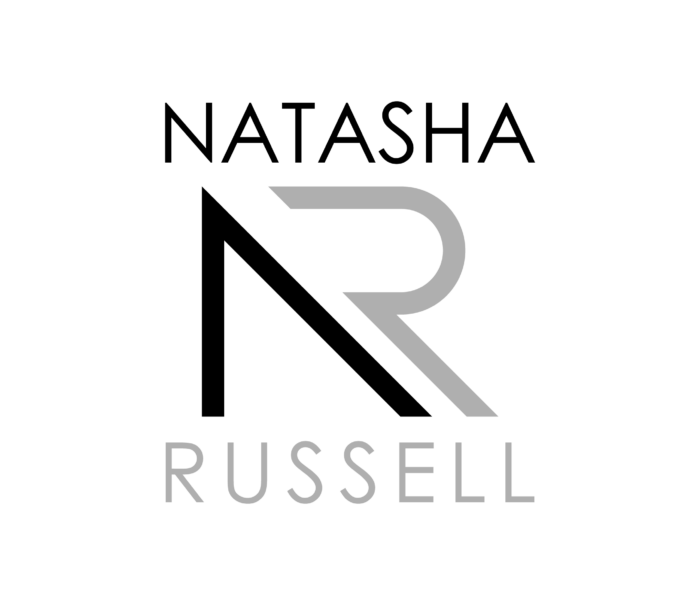
I had the pleasure of speaking to Natasha Russell recently, founder of Natasha Russell Events. I talked with her about how the pandemic has changed the world of events. Natasha specializes in stress-free, comprehensive event management and production services and is based in Cheltenham, UK. She has a long history in the industry, which has no doubt contributed to how successful she’s been these past few months.
I’ve previously interviewed Natasha about her excellent Guest In A Box venture.
A Perfect Fit For The Pivot
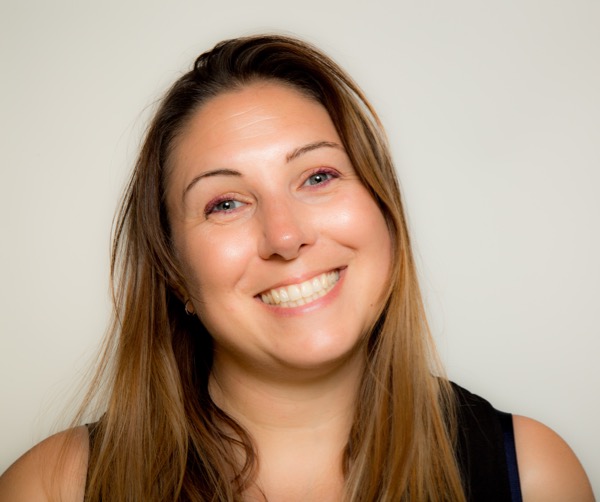
Natasha, who’s been working in the industry for fifteen years, says she first got into events through her work with a charity. After that, she went on to work with the London 2012 Olympic Games. Then Natasha decided to take some time away to figure out what she wanted to do with her life. She soon found herself being offered freelance work with charities and other non-profit organizations, along with big commercial clients. This variation of clients really helped Natasha evolve into the flexible event planner she is today.
“I started out in mass participation sports events for a charity. The smallest event would have a thousand participants. Some of the larger ones might have upwards of 10,000 participants and spectators on top of that. So from the off, I was dealing with really big events, and thinking a lot about crowd management, flow of participants, and designing sites that create that good customer-attendee flow. That particular job gave me a really good insight into marketing, public relations, volunteer management, content management, and producing good documentation. It was a really fabulous first job in events. As a result, I’ve gone on to look after other sporting events. I’ve been super lucky to do all those things.”
A Shift To Festival Work
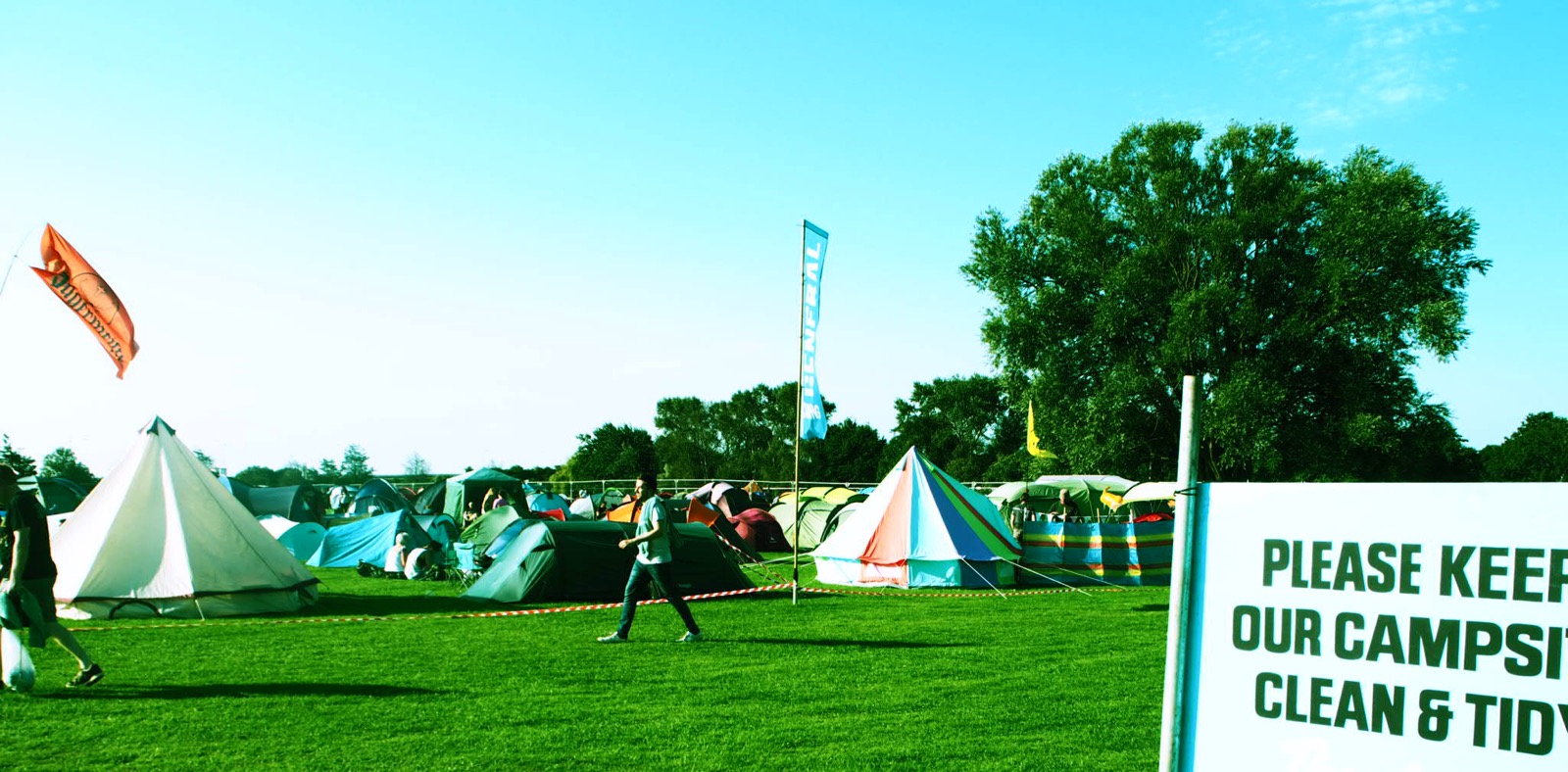
After working in sporting events, Natasha got to dip her toes into the pool of festival work. This transition came naturally to her. “I think it would be much harder for someone to go from a corporate event when they’re used to 50 to 100 attendees than for me. I was used to thousands of people. That was a slightly easier transition,” she remembers.
“I worked with Oxfam as their festival campaign lead. I signed off the banner saying Oxfam, managed a team of volunteers who signed people up to the festival campaign and onto a ‘supporter journey’ with Oxfam. If you’ve ever been VIP at Glastonbury, you’ll know there’s a backstage area between the Pyramid stage and the Other stage. And that year, we hosted a kind of art exhibition of photos in that area. So really, it was a varied job. Ultimately it was about getting Oxfam’s campaign message out to festival-goers, but there were lots of little things to do as well.”
It was her stint with Oxfam that ended up getting Natasha a lot of contacts in the festival world, and she’s since gone on to do all sorts of festival work. “I’ve worked in licensing. Every event has terms and conditions set by the council that it has to work with. My job was working on the event’s operational side to ensure we met all those conditions and didn’t breach any. I’ve also worked in customer relations or local resident relations and more security side work, the side that’s more about attendee welfare.”
Though now very experienced in the festival world, Natasha has kept up her work with corporations, too. “I work with anything from a straightforward conference set-up to the more diverse side of the corporate world, where we’re looking at taking employees away for an overnight experience, and having fun and creating amazing parties. I’ve been fortunate to work on some really huge parties for 1,000 to 5,000 people.”
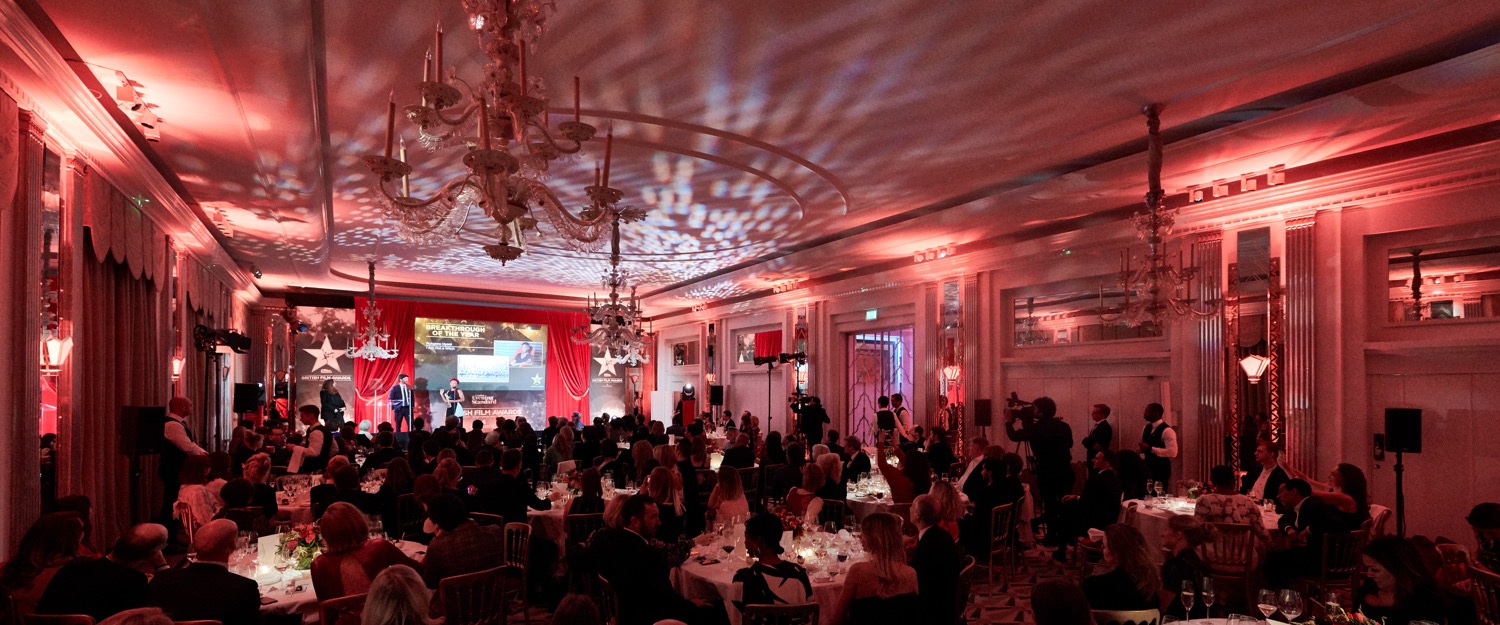
Facing Change Head-On
With such a diverse wealth of experience, I was eager to ask Natasha how she’s handled the transition from in-person events to digital conferences. I particularly asked her what the catalyst was for her to start looking seriously at the various virtual event platforms.
I had that mentality in my head – that it was fine, and I could handle it.
When the pandemic hit, Natasha had already had some experience with streaming events, so she says that put her at a slight advantage. “I did an event last year for Hoxby, which has a remote workforce. Although the idea for the event was for as many Hoxby employees as possible to meet up in real life, everyone was all around the world, so we did have to stream it. I was eager to take on that challenge, but we had no budget, just a webcam, and a laptop. I learned how to stream on YouTube. So I had that mentality in my head – that it was fine, and I could handle it.”
After one of her clients had to cancel their event early on due to COVID-19, Natasha started noticing that everyone was using Zoom. She asked herself if this was really the only way to deliver an event and even the right virtual event platform. “At the start, we didn’t even know all of Zoom’s functionality. We just thought that there must be something better than Zoom. The news was full of people getting Zoom-bombed. So I started looking around and doing some research. Eventually, I discovered a few different virtual event platforms, some that we’d already heard of, and some that we hadn’t. We kept finding more and more. And the longer the pandemic went on, the more of these platforms we heard about. I’m still researching and learning. I have this tradition of trying to learn two new platforms every month. I get a feel for all of them.”
Finding The Right Virtual Event Platform For Your Event
In the traditional world of event planning, finding the perfect venue is key to success. Natasha says that it’s much the same when finding the ideal online platform for virtual events. Virtual event software should be given the same attention and importance as venues did before the pandemic.
“If someone comes to me now and says they want to do an event and aren’t sure what platform to use, the first thing ask them is what their dream originally was for the event and what they’re considering now. Everyone asks why don’t they just do it on Zoom, because they think Zoom is free. Well, Zoom isn’t free, for a start. And it’s also about making the distinction between a webinar and an event,” she acknowledges.
The Difference Between A Webinar And A Virtual Event
The biggest difference between a webinar and a live virtual event, according to Natasha, is that a virtual event is a much bigger experience. “With a webinar, you might log on for an hour to learn something like a corporate message from your boss or some other information – it’s quite transactional. An event is about more than that – there’s the buzz beforehand, there’s something really unique about attending. It’s a blurred line, but I know I’m going to get something from being there in real life that I’m not going to get if I watch later on a screen, or just Google the information or read about it afterwards.”
No two events are really ever the same. So why do we think that every event would go onto one platform?
Building off her idea that your event software is your venue, Natasha stresses that no good event planner takes every client to the same venue. “Of course, you have your favoured venues. And you sometimes take a different event back to a venue you’ve used before, but you’ll set it up differently. No two events are really ever the same. So why do we think that every event would go onto one platform?” she asks. “It just doesn’t work like that. Every event has different objectives, different outcomes, different attendees. You really need to consider your virtual event platform like you consider your venue. You’re not going to have the most technically-advanced, complicated platform if your audience isn’t very tech-savvy or not likely to have great internet access.”
Choosing The Right Virtual Event Platform Is All About Your Client
When Natasha is looking for the right virtual event platform, she stresses that it’s all about the client. “Networking comes up time and time again. But that can be anything from having a chat function to one-on-one video meetings that you can set up on the fly within the event to exchange business cards. Or you can do speed networking or just voice networking – there are so many different options.”
Another issue to consider when choosing a platform is accessibility, which Natasha says is becoming more critical. “We know that virtual events are now opening up to a whole new audience – the audience that wouldn’t or couldn’t travel to your event, people that maybe couldn’t afford the event plus the price of travel,” she confides. “And if you’ve got people that need captions on the screen, there are platforms that will automatically do that. Something I’ve not seen, though, is anything about visual impairment. How easy are these platforms going to be if you have a visual impairment? You’ve got to look at all these things. There are a lot of things to consider. You have to weigh up what’s important.”
Would I have done it for a live event as opposed to a small-scale webinar? Not a chance!
Cost is also something that clients and event planners must consider when looking at hosting virtual events. A common misconception that Natasha hears is that it’s cheaper and easier to do virtual events. “It’s really not,” she laughs. “Sure, you can absolutely put on a forty-minute Zoom webinar for a small group of people for free. But if you want to put on an event, you need more people than that. And what I’m finding is I’m doing the work of a small AV team in a webinar on Zoom. I’m getting the microphones live, I’m switching slides. At an in-person event, you’d have a sound engineer doing mics. You’d have a video graphics person doing a presentation. Now I’m doing all of that. Would I have done it for a live event as opposed to a small-scale webinar? Not a chance!”
Which Is The Best Virtual Event Platform?
While the number of virtual event platforms can make any event planner’s head spin, Natasha says some are doing a fabulous job and worth mentioning.
“Zoom is brilliant — there’s nothing wrong with using Zoom if you just want to put on a webinar or have a small chat with a group of people. And when I first started looking at platforms, Hopin really stood out, and I think it still does. It’s a great all-around option. In fact, in the first week of March, before the pandemic struck in the UK, I ran a conference with 400 people with a small exhibition, where networking was a big deal. If I’d have to do that online three weeks later, Hopin would have been the platform I’d have chosen,” she attests.
The pandemic has essentially, Natasha notes, forced five to ten years of technological advancement to take place in five short months. And other platforms are starting to catch up. “To date, YoTribe is probably my favourite virtual event networking platform. I haven’t been on it for a while, but the only thing I thought they were missing was a broadcast capability, which they’ve since added in. And in the last couple of weeks, I’ve heard about a new platform called Airmeet, which looks really interesting.”
A Virtual Event Platform Revolution
If the COVID-19 pandemic can have any silver linings, I asked Natasha if she thought that the technology emerging for virtual events software could be one of them. She was eager to share her thoughts on how things have evolved so quickly and what it means for not just event planners but also other professionals.
Social technology is always changing, we’ve just accelerated it.
“When you think about where we are now with social media, and the type of social interaction that’s available, it’s totally changed. And now that we’ve been forced to adapt to a worldwide pandemic, we’ve had to look at these things and explore them. Social technology is always changing, we’ve just accelerated it.”
Why Now?
Companies now have the opportunity to invest like never before in online virtual event platforms, thanks to the demand for them that the pandemic created. “The demand just wasn’t there before. Companies couldn’t invest the money – they just couldn’t move forward as quickly as they needed to.”
And marketing has also changed. People aren’t willing to spend $500 for a ticket to a virtual event. So companies have to find other ways to make that revenue. Natasha says this can lead to an opportunity to reach even bigger audiences than before.
I think the next big thing will be all about how to really give sponsors value for their money, and how to get more people signed up for events.
“I think the next big thing will be all about how to really give sponsors value for their money, and how to get more people signed up for events. I’m already seeing some of my clients looking at how they can operate on a more international basis. They’re getting interest from people from Australia, from Europe, and from the US. There’s no way to tell if these people would actually fly in for an event, but it does show that the appetite is there. The question they have to ask themselves is, how do they market themselves to the wider network that’s obviously there?”
A New Normal?
Given all that’s happened in 2020 to lead to such a massive demand for virtual events, I asked Natasha if she thinks that this new way of doing things will possibly have an effect on in-person events once the world gets back to either the way it was before COVID-19 or some type of new normal.
We don’t know if there’s going to be a spike or a second wave of the virus. So we’ve got to start thinking of events differently and ask what an event looks like to the client.
“We’re about five months into this pandemic in the UK. And although events have a provisional go-ahead, we don’t really know what that’s going to look like. We don’t know if there’s going to be a spike or a second wave of the virus. So we’ve got to start thinking of events differently and ask what an event looks like to the client. What do they want people to experience when they come to an event?” she muses.
“I definitely think we’ll see new things happening — I don’t think it will be acceptable anymore to have an event without a livestream. I think the way we consume live events might change. It’s impossible to say what will happen, but I think we’ll see more of these smaller, local Hub & Spoke roadshow-style events. We’ll be doing the same event, over and over, but with smaller audiences. But I think all of these will definitely be live-streamed or recorded. More and more, we’re looking at the event as part of something bigger.”
Natasha says that part of that change will see event professionals asking themselves what they can do with the recording technology available. “Do we make a highlight video? Or do we have short little stories for Instagram? Do we cut it down and make a podcast from the recording? You can reuse that content.”
Virtual Event Platforms Are An Addition, Not Replacement To Live Events
On a personal note, Natasha adds that not even she has been immune to the lure of the excitement of virtual events. “I attended the Tomorrowland Festival virtually this year. It actually made me want to buy a ticket for the real-life event. If you’d asked me six months ago if I would have bought a ticket for an electronic dance music festival, I would have told you it wasn’t my cup of tea. I didn’t even know what the Tomorrowland Festival was! But what I saw them do virtually was so incredible that I would now definitely buy a ticket.”
That type of event is about so much more than just the music. It’s about walking around a muddy field, it’s about sleeping in a tent, it’s about hanging out with your friends and drinking warm beer that’s been in a cool-bag for three days.
At the same time, Natasha says, she doesn’t foresee a virtual event platform ever replacing something like a music festival. “That type of event is about so much more than just the music. It’s about walking around a muddy field, it’s about sleeping in a tent, it’s about hanging out with your friends and drinking warm beer that’s been in a cool-bag for three days. It’s not just about the content. I don’t think we’re ever going to lose that. Some things are just very unique to live, in-person events, and I don’t think the demand for live events will be diminished. It’s probably going to be increased.”
Sponsorship Is A Challenge
The biggest potential roadblock that Natasha can see for getting back to live events is financing and sponsorship. “I had a charity event that was cancelled recently because they didn’t have sponsorship. How long is that sort of thing going to take to come back? They’ll be looking at return on investment and things like that. So some events will probably stay virtual. Some will come back, but things are going to change, and it’s going to depend on finance.”
Natasha says there’s also a fear, with corporate events, about employees’ health and well-being. If all the employees attend the same event and all get sick, what would that mean for the business? Regardless of this, she remains optimistic that public events will make a successful comeback. And her optimism comes from perhaps a rather unlikely place.
And really, how long can we keep going without doing anything?
“Public events are already coming back. People are finding ways around it. There is that fear factor for the attendee. But I think we’re already seeing people doing these things and not getting sick. And so you relax because you’re seeing other people do it. And really, how long can we keep going without doing anything? It’s all about that trust factor. And when you see other people doing it, you’re more likely to do it,” she explains.
“There was recently an event for around 5,000 people in Wuhan, China. They were all crammed in together — you can find photos of it online. The fact of the matter is, Wuhan hasn’t had a reported coronavirus case since May. They’ve got mass testing, they’ve got a handle on it. And you think, if Wuhan’s doing it, things have got to come back. There’s absolutely a desire to get things back on track.”
Optimism Required
As the interview came to a close, I found myself inspired by Natasha’s enthusiasm and optimism. We may still have a long road ahead of us, but anyone who has ever worked in events knows to expect the unexpected. And to never count out a planner or a business with the ambition, tenacity and resilience that Natasha’s shown. The future may not look exactly like we expected it, but if Natasha is right, we’ve all got a lot to look forward to in the coming months and years.

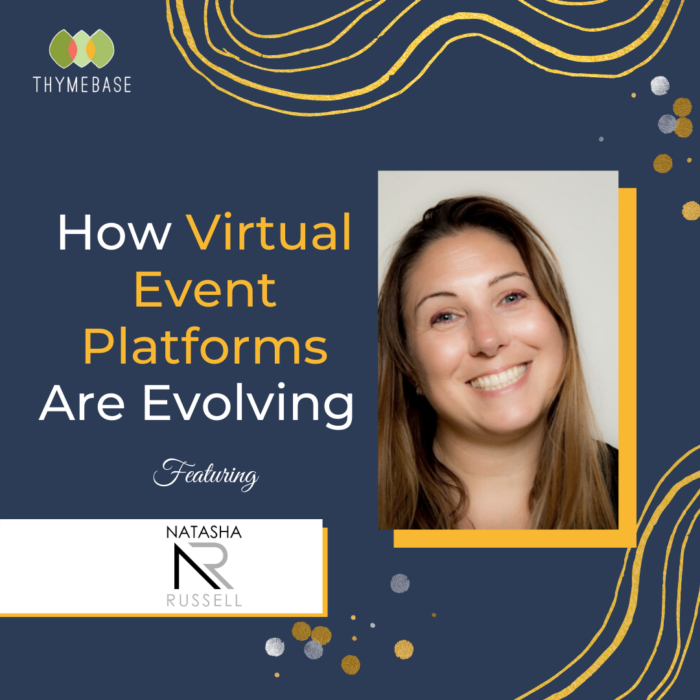
Pingback: Virtual Event Set Design Adds A Wow-Factor To Digital Conferences : ThymeBase Blog